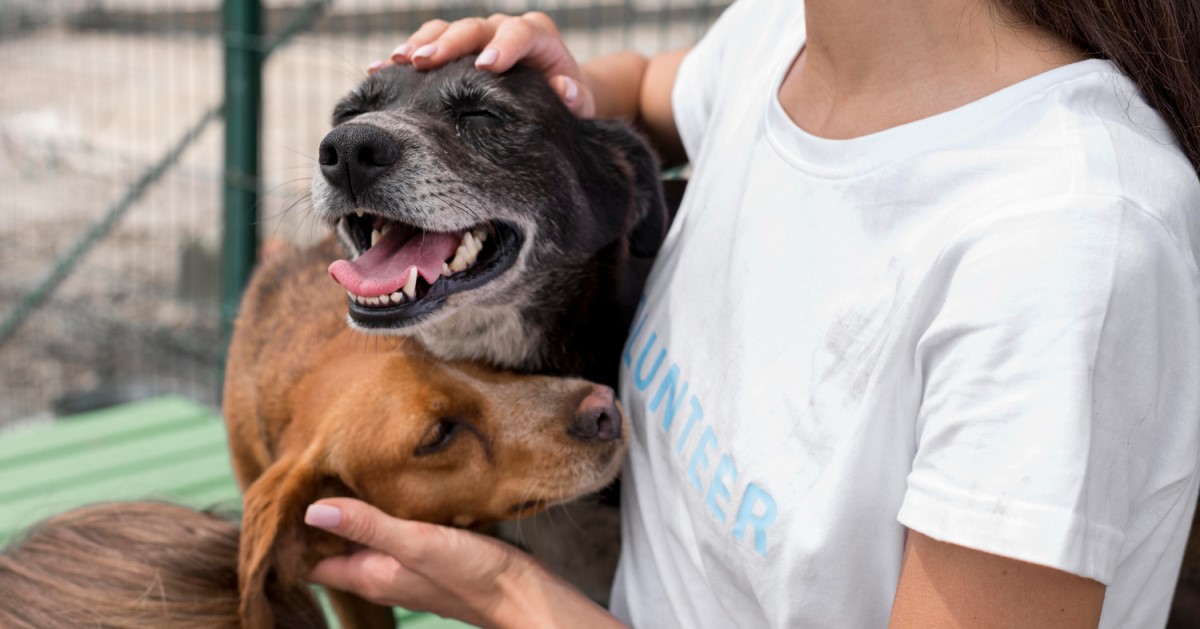Options and Requirements for Volunteering With Animals
If you are an animal lover, there’s nothing as fulfilling as helping an animal in need by volunteering.

Did you know that working with animals reduces stress levels and helps you achieve a more fulfilling life? And did you also know that volunteering with animals gives them something they probably would not otherwise have: a bit of joy in what might not be very happy lives? If you’ve ever thought of spending time with animals, here, in detail, are several options you can consider for enriching your life, and theirs, by volunteering.
Animal Shelter Volunteering
The first thing most people think of about volunteering with animals is an animal shelter. Millions of needy animals crowd shelters, most filled to capacity and where staff is very overworked. According to the ASPCA, an astounding 6.5 million animals enter shelters every year. It’s easy to see why volunteers are needed to ease staff burden and make life more bearable for the animals.
The number of things you can do volunteering at an animal shelter is almost limitless. Here are just a few of the possible things to do when volunteering at a shelter.
- Spending time socializing with cats
- Working at fundraising events
- Walking dogs
- Working with dogs in playgroup settings
- Bathing and grooming dogs
- Taking animals to vet appointments and adoption events
- Doing office and administrative work
- Taking photographs of pets
- Training dogs
- Cleaning kennels and other areas of the facility
- Observing and communicating about an animal’s behavior
After pondering these possibilities, do you think you’d be a good fit? Generally, these are the basic qualifications necessary to be a shelter volunteer:
- You meet the age requirements for the shelter, generally no less than 16.
- You have the physical stamina necessary for bending, lifting dogs, and spending hours on your feet walking dogs.
- You can commit to a regular schedule.
- You can work well with people, including the staff of the facility.
- You can be flexible with your time if a need arises.
- You can use technology to communicate.
- You don’t mind getting dirty.
In-home Pet Fostering
Life in the shelter is traumatic for most dogs. It is loud, scary, uncomfortable, and lonely. A new trend for homeless pets is in-home fostering. Many shelters are now running programs to place dogs in foster homes and getting away from housing them in a shelter. It’s no surprise that in-home environments are so much more comfortable for pets; plus, more focus can be placed on the pet to look for health or behavioral-related issues that might be overlooked in a large and loud shelter. Statistics show that adoptions for pets in a foster home are much higher than for pets in an animal shelter.
In addition to taking in a pet from your local animal shelter, many pet volunteer organizations are always looking for foster families to take care of a pet until he can be adopted. Some are breed-specific, size-based, or open to all pets, no matter what. Some organizations bring in pets from areas of the country that have been affected by disaster, and others have pets flown in from countries where dogs are used for food. Most of these rescue groups have websites, so you can explore the Internet to find one that interests you.
If you choose to foster, you’ll need to take on these responsibilities:
- Find out as much as possible about your foster pet to be sure you are a good fit for him.
- Care for him as if he were your own: healthy food, exercise, vet visits, medication if necessary, and overall loving home.
- If you don’t have your own pets, take your foster pet to play and socialize with other pets.
- Spend time training your foster: basic commands, potty training, leash walking.
- Talk to potential adopters about your foster, invite them to meet him, and be honest about your experiences with him – good and not-so-good.
- Take pictures that can be posted on websites.
What qualifications do you need for fostering?
- You love pets but are not ready for the commitment of a permanent one.
- You need the flexibility inherent in fostering.
- You can commit to things like walking dogs, giving medication, or nursing kittens.
- You have experience with animals on some level.
- You are patient and have a love for animals.
- You’re willing to promote your foster.
Volunteering on the Farm
Are you a farm girl or boy at heart? If so, you might want to look into volunteering at a farm sanctuary. These facilities take in animals that have been abused or escaped from inhumane situations and provide them with lifelong care in a natural environment. They are mostly allowed to roam as they would if totally free. If this sounds interesting to you, here are some of the things you can expect as volunteer responsibilities:
- Cleaning the barn and/or stalls
- Caring for animals in the facility’s hospital
- Cleaning and doing laundry in the hospital
- Feeding the animals
- Serving as a docent
- Providing office and administrative support
- Leading tours
- Helping with special events
What qualifications do you need to be a farm volunteer?
- You don’t mind working in hot, cold, and anything in-between weather.
- You are solid and fit.
- You can commit to regular volunteer times.
- You are concerned about the rights and wellbeing of farm animals.
Other Ways to Volunteer
Maybe you cannot physically care for animals, but that doesn’t mean there aren’t opportunities for you to volunteer. Here are some things to consider.
- Bios: All pets available for adoption need a bio. If you have a flair for writing, consider pet writing bios. Whether for a rescue group or an animal shelter, the more engaging the bio, the better chance the animal will be adopted.
- Laundry: The laundry requirements in a shelter are overwhelming. It may not be the most glamorous job, but it is necessary, and you’ll feel good about contributing to the animals indirectly.
- Social media: Serve to promote a shelter or rescue group on social media.
Ready to start saving money on pet wellness care?
Then take a look at Mint Wellness, the pet wellness plan that provides fast reimbursement on routine pet care. Save on vaccinations, wellness exams, preventatives, dental, and more!
Learn More


